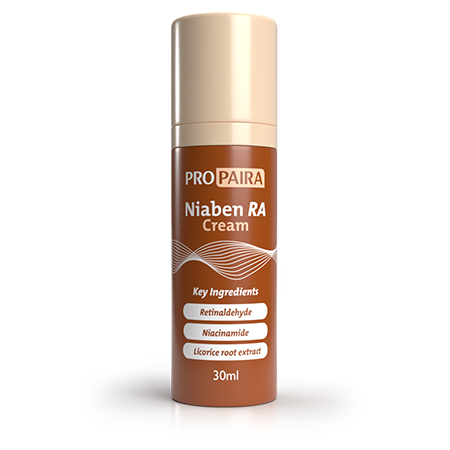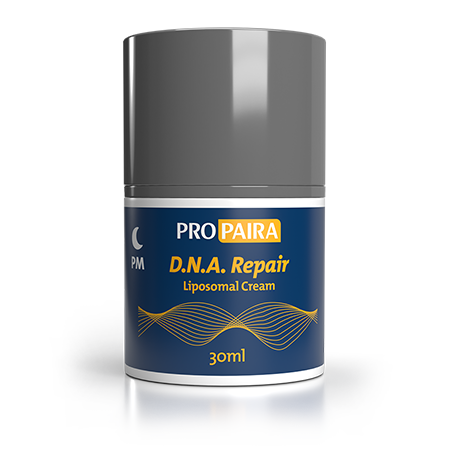Retinaldehyde (Retinal)
- Promotes cell turnover
- Reduces fine lines and wrinkles
- Improves skin tone and texture
- Combats hyperpigmentation and melasma
- Fights sun and DNA damage
- Direct precursor to tretinoin (retinoid)
- Helps reduce acne and inflammation
Retinaldehyde, also known as retinal, is a derivative of vitamin A and is highest form in the retinoid family. It is a potent ingredient that is known for its ability to promote cell turnover and improve skin texture. Retinal is distinct from retinol (another vitamin A derivative) due to its higher potency and efficacy, making it an effective choice for various skin concerns.
According to a 2023 journal article, retinal was shown to thicken the outer layer skin and increase certain proteins and cell activity leading to more youthful looking skin. When compared to tretinoin (another retinoid), both retinaldehyde and tretinoin effectively reduced wrinkles and roughness, but retinaldehyde caused less irritation. There is a two step process of retinal converting into retinoic acid which is the active form of vitamin A. Retinal first converts to retinol which is then transformed into retinoic acid, leading to cellular processes that lead to numerous skin benefits such as skin renewal and improving overall skin health.
References
Karris, P. K. (2023). Vitamin A: It’s role in cosmeceuticals for antiaging, Dermatological Reviews. Avalible at: https://onlinelibrary.wiley.com/doi/epdf/10.1002/der2.218
Products that contain Retinaldehyde (Retinal)

